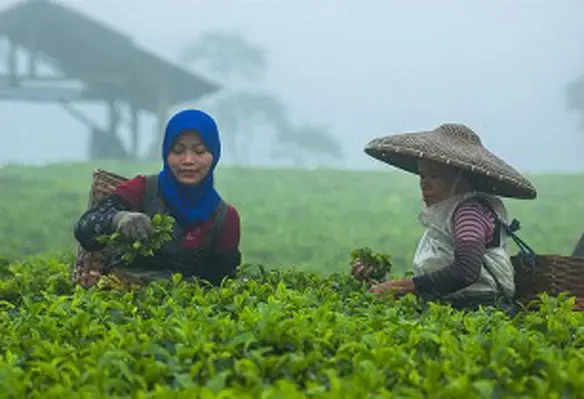Global tea consumption and production are projected to keep rising over the next decade, driven by robust demand in developing and emerging countries, thus creating new rural income opportunities and improve food security in tea-producing countries, according to FAO
Tea consumption has grown particularly rapidly in China, India and other emerging economies, driven by a combination of higher incomes and efforts to diversify production to include speciality items such as herbal teas, fruit fusions and flavoured gourmet teas.
The report, which was dicsussed by the FAO Intergovernmental Group (IGG) on Tea, at its biennial meeting in Hangzhou, China, suggests that tea consumption has also benefited from increased awareness about the beverage's anti-inflammatory, antioxidant and weight loss effects.
Tea production set to increase
World production of black tea is projected to rise annually by 2.2 per cent over the next decade to reach 4.4mn tonnes in 2027, reflecting major output increases in China, Kenya and Sri Lanka.
Global output of green tea is foreseen to increase at an even faster rate of 7.5 per cent annually to reach 3.6mn tonnes in 2027, largely driven by China, where the production of green tea is expected to more than double from 1.5mn tonnes in 2015-2017 to 3.3mn tonnes in 2027.
Climate change impacts
The IGG report also warns that tea production is highly sensitive to changes in growing conditions. Tea can only be produced in narrowly defined agro-ecological conditions and, hence, in a very limited number of countries, many of which will be heavily impacted by climate change.
The report, therefore, urges tea-producing countries to integrate climate change challenges, both on the adaptation and mitigation front, into their national tea development strategies.
Trendy product for young people
Young, upper-middle class consumers are looking for fashionable products to be integrated into their lifestyles, which now also include gourmet quality tea and consuming them in the sophisticated environments of specialty teashops and exclusive restaurants, hotels and cafés.
Promoting health benefits to boost demand
While world tea consumption has increased over the last decade, traditional importing European countries, with the exception of Germany, have seen a decline in consumption levels. Overall, the European tea market is largely saturated. Per capita consumption has been declining for more than a decade, facing competition from other beverages, particularly bottled water.
The report argues that the decline in tea consumption in the traditional European markets could be stalled or even reversed by diversifying into other segments, such as organic and specialty teas, and by promoting their health and wellbeing benefits.
The strategy of promoting the health benefits of tea has also proved effective for other markets. For example, loose-leaf tea is seeing new growth in the US, not least as a result of increased public health consciousness.





